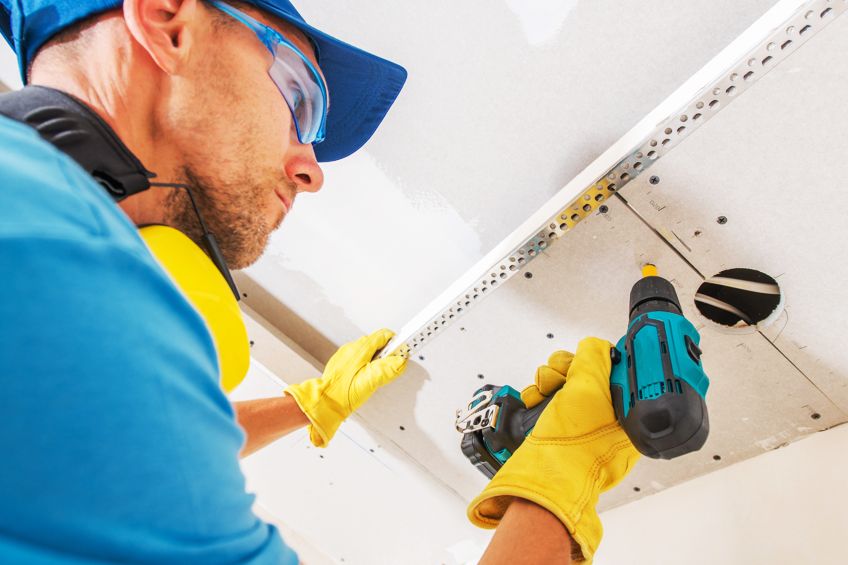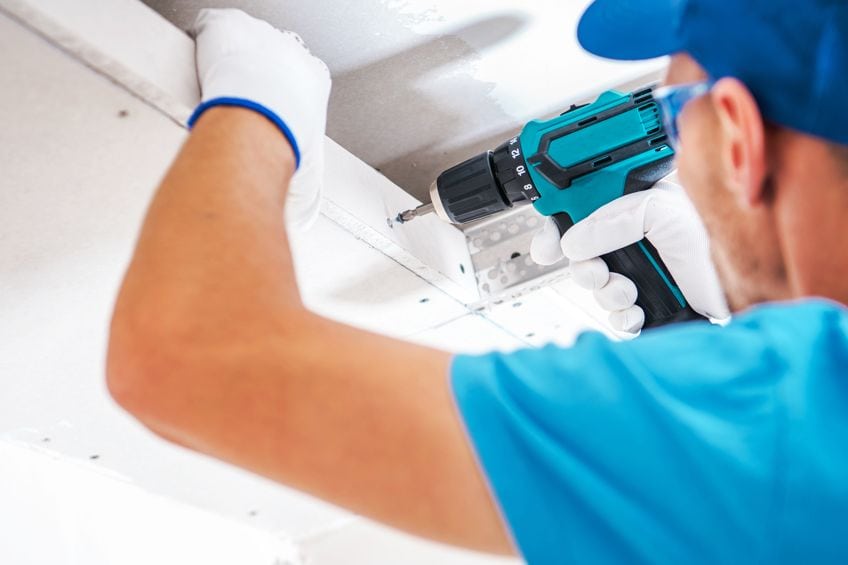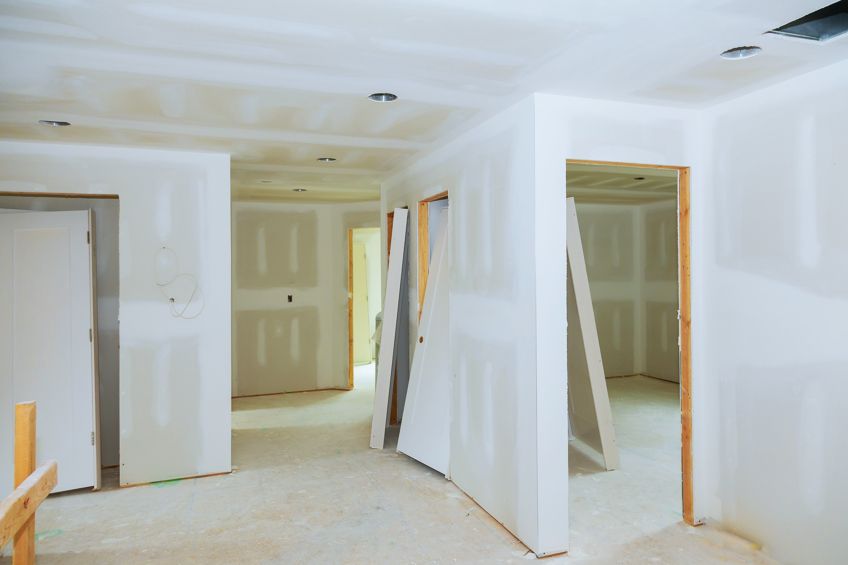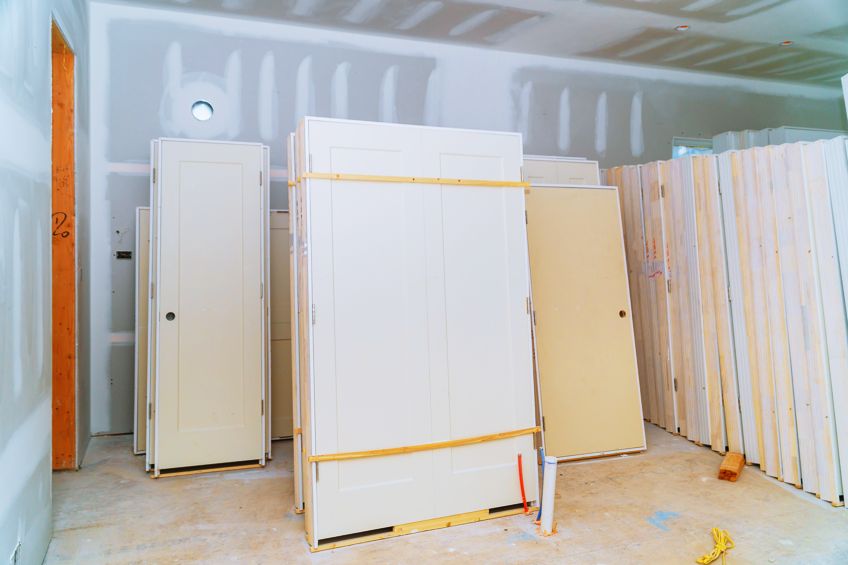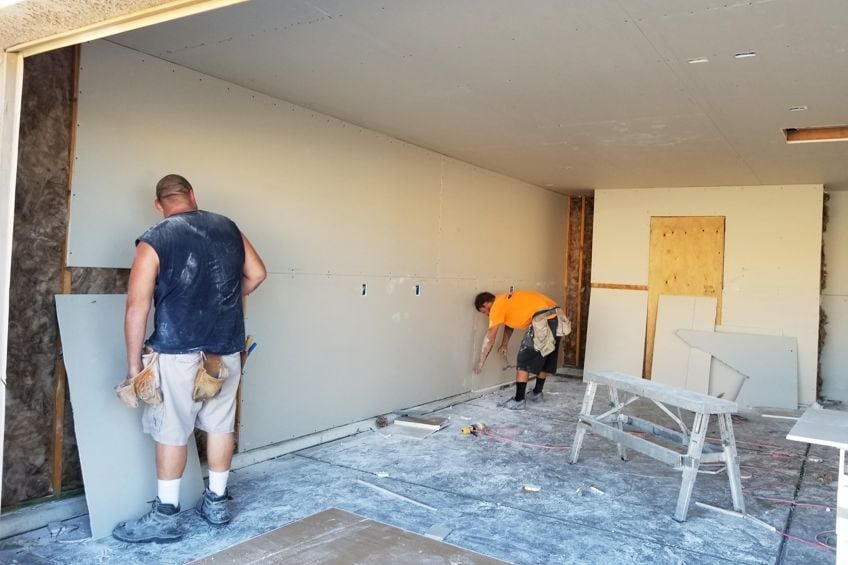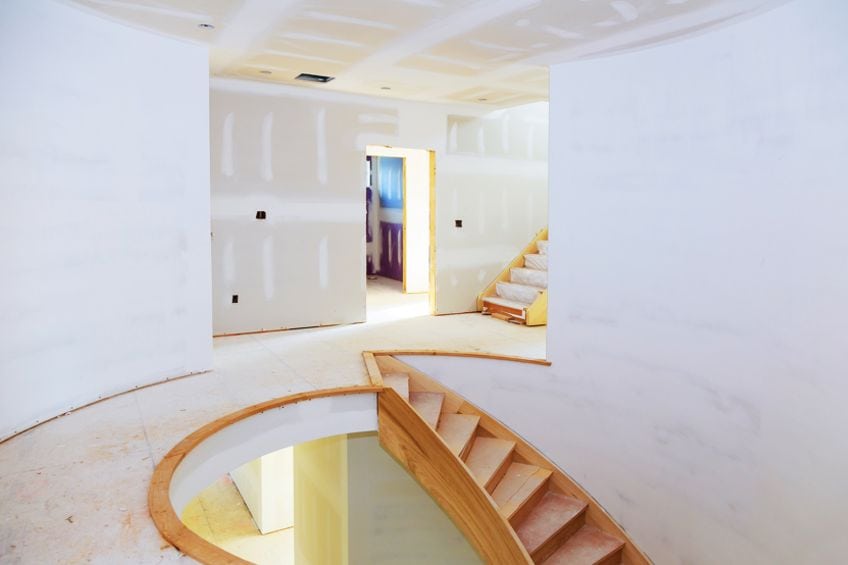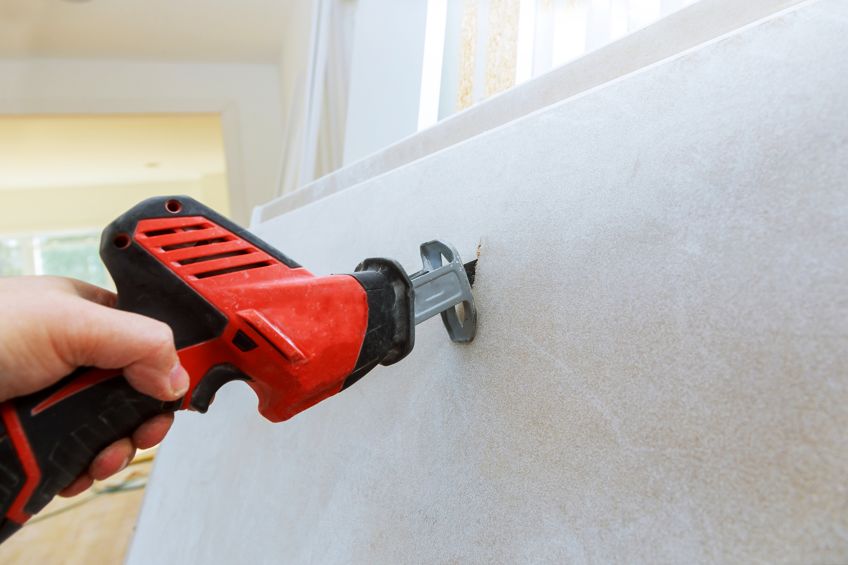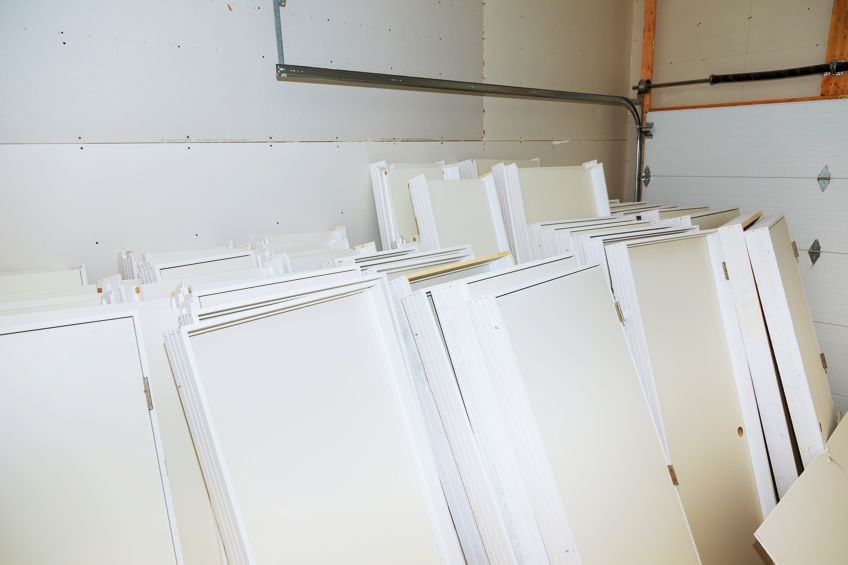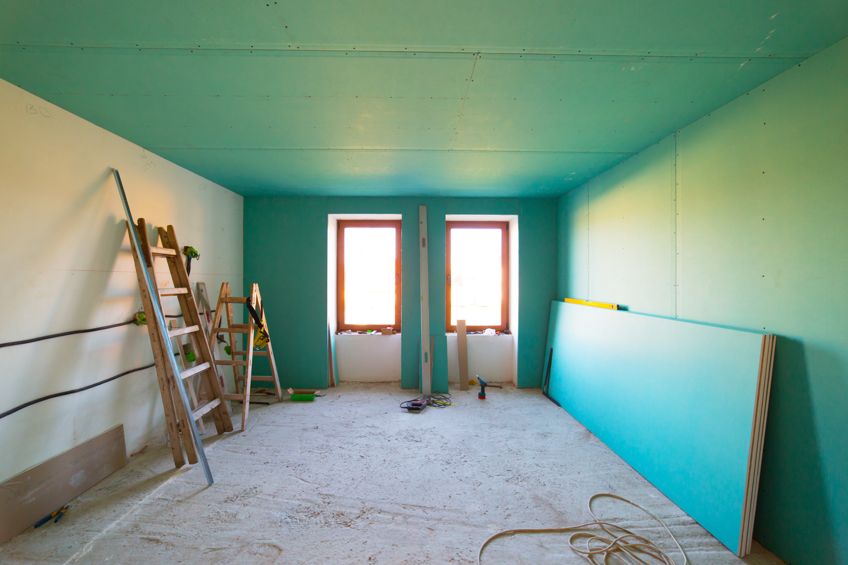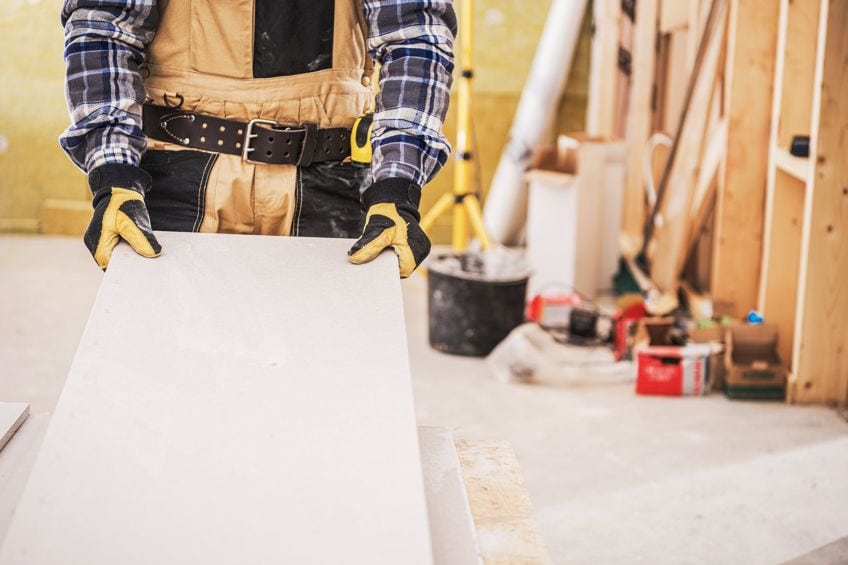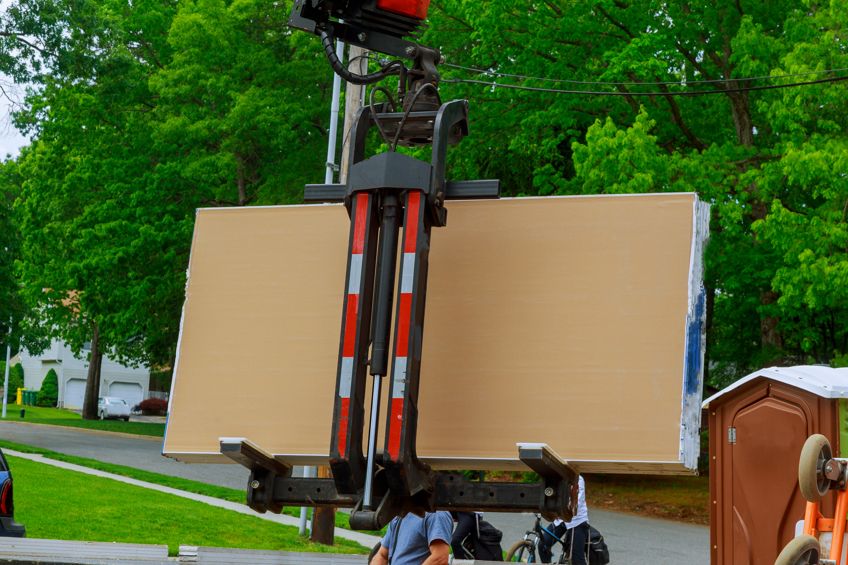Drywall Thickness – How Thick Should Your Sheetrock Be?
This post may contain affiliate links. We may earn a small commission from purchases made through them, at no additional cost to you. You help to support resin-expert.com
Constructing or renovating your home can be a stressful experience. Thankfully, there are tons of technological innovations and space-age materials that streamline this process for us, from resin casting, woods that don’t rot or split, and even foams that eliminate the need for nails and glue. Arguably one of the most revolutionary materials for the home improvement industry in recent years is drywall, but what exactly is drywall, and what makes it one of the most popular construction materials on the market today?
Table of Contents
What Is Drywall?
Most of us have drywall in our homes unless you happen to be privileged enough to have a home constructed from pure brick and mortar (in which case hats off to you). If you happen to form part of the 98% of the US population that is not this fortunate, you are well acquainted with the thin pieces of board that divide our homes into their separate living quarters. If you have ever wondered what these boards are made of, today is your lucky day!
Drywall is essentially two large pieces of paperboard that function as the surface layers of a substance called gypsum, the paper boards are the outer layers, and the gypsum forms the center of the board like an ice cream sandwich. This material was marketed as early as the year 1916 and campaigns focused on just how safe this material was as opposed to conventional walling materials. The “big draw” of what was then known as “sheetrock” was the fact that it was fireproof in addition to being relatively cheap and easy to install.
These characteristics are what drive drywall sales in current markets too, but since formulas and manufacturing techniques have improved it has become even more of a phenomenon. Surprisingly sheetrock walling did not catch on until about 20 years later at the end of the second world war, this led to the baby boom and people were looking for cheap and effective ways to insulate their newly bought homes while making them aesthetically pleasing.
Unsurprisingly, the drywall industry made an absolute killing in the years following the war. People had money to burn after cashing their GI cheques, and with everyone having their patented two and a half kids on the way, there were hundreds of thousands (if not millions) of homes that were being renovated and/or expanded upon.
How much gypsum do you think was used in the process of meeting their ridiculously large customer bases needs? The answer is, it’s completely irrelevant. Gypsum is a by-product of coal power and considering that the entire US ran on coal power at this point in time, and some parts continue to, these companies have enough gypsum for the next 350 years. They know this too, considering they make 4 billion dollars in sales each year.
This seems like a win-win situation, right? Consumers get high-quality material that ensures their safety from fires and insulates their homes from cold weather, all while being easy to install and keeps their homes looking great. Well, a few decades ago we discovered that drywall might not be that great for the environment, in fact, it can be downright deadly to human beings if allowed to degrade in conjunction with other materials.
If drywall is not disposed of correctly it can create a substance called hydrogen sulfide which smells like raw sulfur and can be fatal to people in high doses. The good news is that drywall waste is easily recyclable and can be used to create a variety of constructs. Drywall companies are aware of this and have even gone as far as to lean into alternatives in order to lessen their carbon footprint, and many consumers have followed suit
What Are the Pros and Cons of Drywall?
It is common knowledge that in our modern lives things have become far more convenient and that both efficiency and instant gratification have become the cornerstone of modern industries. Have you ever asked yourself at what cost this boom in production and efficiency carries?
Well, this is not a new phenomenon, in fact in the same era drywall gained its popularity, materials like plastic and other synthetic compounds were rearing their heads in mass production, and we all know how well those materials have worked out in the long run. With this in mind, let’s have a look at some of the pros and cons of using drywall as a building material.
PROS
- Cheap
- Easy to manufacture
- Easy to install
- Easy to paint/decorate
- Fireproof
- Insulates structures well
CONS
- Requires mining and burning of fossil fuels
- The chemical process needed to manufacture it produces greenhouse gasses
- Not impact resistant
- Disposal methods are tedious
- When it degrades it has the potential to create hazardous gasses
- Manufacturers have a history of price gouging and have settled lawsuits many times
What Are the Standard Thicknesses of Drywall?
How thick is drywall? When constructing anything, knowing which materials are conducive to which applications can save you a lot of time and money, not only in the construction process but in the long run as well. Different thicknesses of drywall are suited to different applications, therefore below we have created a comprehensive guide to standard drywall thickness and which applications they are best suited for. Remember that drywall is a fairly rigid material and therefore custom shapes, thicknesses, and compositions are available for less conventional construction purposes.
¼-Inch-Thick Drywall
Being the thinnest drywall thicknesses on the market today, it is popular for those who have intricate surfaces they need to cover. Being thin, this type of drywall can be bent and curved around corners, a good example is the base of a spiraling staircase. Although they are extremely useful you should be mindful when handling them as they are quite thin and rigid, which means that they can be brittle.
The last thing you want is to be cleaning up bits and pieces of what was supposed to be your drywall. On the upside, ¼ inch drywall only weighs around 38 pounds which means you won’t be dropping it because it’s too heavy, although chipping the edges of drywall these thin and hairline cracks are common mishaps in the industry.
This thickness of drywall is usually used to cover existing surfaces instead of replacing them, therefore you won’t typically find it on large surfaces like walls, but you might find it being used to cover a ceiling or being used to renovate an attic or two. If you can’t get the ¼ inch thick drywall to curve to your liking you could try dampening it a bit to make it slightly less rigid.
½-Inch-Thick Drywall
This is the most common drywall thickness of the lot. This thickness of drywall is used to create interior walls, and just like the parents of those baby boomers back in the 1950’s many homeowners and contractors use this type of board in ridiculously large volumes to finish interior spaces. Being thick enough to insulate your home and make it feel cozy, and while being light enough for those installing it to carry it up and downstairs, this thickness of drywall is extremely popular.
This type of drywall can be used with both wooden and steel beaming and is considered the standard thickness of drywall by those in the industry. Just like ¼ inch thick drywall, this drywall thickness can also be used on ceilings and to cover existing surfaces if need be. In recent years a lighter variation of ½ inch drywall has been introduced to the market which weighs roughly 12 pounds less than its conventional counterpart, although it can be somewhat more expensive (shopping around for the best price is advised).
3/8-Inch-Thick Drywall
Being the drywall thickness of choice for those looking to renovate their homes and replace existing drywalls. This drywall thickness can also be used on curved surfaces just like ¼ inch thick drywall but is slightly more robust and therefore you might find yourself opting for this drywall thickness as opposed to the much flimsier ¼ inch thick drywall. Because this thickness of drywall is marginally lighter than its half-inch counterpart it can be used in areas where half-inch boards might be considered overkill. These applications could range from ceiling coverings to pantry walls and even wall backing for kitchen cupboards.
This thickness of drywall is pretty niche which means it won’t be used or seen as often as half-inch boards, but it serves an important purpose, especially when you need a drywall thickness that walks the line between ¼ inch and ½ inch.
5/8-Inch-Thick Drywall
We have reached the thickest commercially sold drywall on the market today. This drywall thickness is not commonly used outside of commercial applications, a good example of this are walls of office buildings and other large structures. Drywall of this thickness comes with many advantages which include but are not limited to sound insulation, maintaining ambient temperature, and increased fireproofing. As we are sure you can imagine these advantages come with an increase in mass. and when things increase in mass, they generally increase in weight too, making 5/8-inch-thick drywall the heaviest drywall thickness.
This definitely contributes to the thickness of drywall not being used in our homes, but the increase in weight also means a center that is far denser and more resistant to water damage and corrosion caused by moisture in humid environments. 5/8-inch-thick drywall is also far less prone to sagging when used for ceiling applications, therefore in large buildings or multi-story structures, this type of drywall is a common feature.
How to Calculate How Much Drywall You Need
If you have ever painted your home or basically any surface in your life you know that estimating how much paint you need can be a hassle. You might encounter the same problem when you are working out just how much drywall you need when renovating or building your home. Thankfully, there is a simple equation you can follow to ensure that you have the right amount of drywall for your chosen application. As with painting, however, the chances are that you will have some drywall left over whether it be because you overestimated or there was some cutting involved in the installation process.
The formula used for calculating how much drywall you need is simple: Just take the total square footage of the area you need to cover and divide it by 32 or 48. The number you end up using to divide by depends on whether you are using 4×8 drywall or 4×12 drywall. Once you know how many sheets you need for the job, we advise you to add roughly ten to fifteen percent to the total to account for oddly shaped areas or surfaces you might have missed out on the first time around. This is a great way to ensure that you do not end up purchasing too much or too little drywall.
For your convenience here is the equation should look like: AREA ÷ 32/48 = X + 10/15 %.
Since drywall is manufactured in different sizes you might need to adjust the equation slightly. Here are some of the most common variations of drywall sold commercially. These can be manufactured much bigger or smaller for custom projects. The most used drywall sizes are 4ft by 8ft (4×8), 4ft by 10ft (4×10), 4ft by 12ft (4×12), 4ft by 16ft (4×16), and 2ft by 2ft (2×2). Drywall sizes along with drywall thicknesses dictate how you can manipulate them to fit in your environment, therefore proper assessment of your work area, thicknesses and sizes is extremely important.
What Are the Different Types of Drywall?
There are several types of drywall on the market in addition to varying sizes and thicknesses. Knowing the subtle differences in sheetrock sizes and lightweight drywall is all well and good, but you could be purchasing the wrong drywall for your application. For your convenience here are the different types of drywall that you can use for your next (or current) home improvement project.
Standard Drywall
This is the type of drywall we have been discussing so far. It is sold in the standard variety of thicknesses and sizes. This type of drywall is affordable, easy to install, and is characterized by its typically pure white appearance. This type of drywall provides moderate sound and heat insulation and can provide protection from open flames. Due to this drywall being one of the most affordable variations available it tends to sell the best, additionally this type of drywall is highly customizable, designed to allow both paint and common wallpaper to adhere easily.
This type of drywall has come under criticism recently for not being environmentally friendly as well as becoming toxic during its decomposition process.
Green Board
Green board is a type of drywall that is easily identified by its green color scheme. Green board is less commonly used compared to the standard drywall as it is manufactured for a particular purpose, this contrasts with standard drywall as it is manufactured to be as versatile and affordable as possible.
Green board is designed for installation in applications where atmospheric moisture or water is constantly present. Green board is particularly resistant to water damage, rot, mold, and other moisture-related damage, these properties do make green board marginally more expensive than conventional drywall as it can be used in bathrooms, saunas and even building containers. You should keep in mind that the green board is not by any means waterproof and therefore should not be treated as such.
Blue Board
Blue board (much like green board) is a special type of drywall that has a niche application in the industry. Blue board is also known in the industry and plaster backing as it is ideal for veneer plastering. Much like green board, this type of drywall is particularly good at resisting damage from moisture like water damage, mold, rot, and related afflictions.
Unfortunately, unlike most other drywalls on the market green board is not to be used with mud, tape, or paint as it does not take well to these coatings.
Again, much like green board, the intended use of blue board is in areas that contract high quantities of moisture or humidity such as bathrooms and/or saunas. Unlike green boards, this type of board should not be used with tile backing, instead simply installed on its own.
Paper-Free Drywall
Where conventional drywall consists of gypsum coated on either end with paperback materials, this type of drywall has no paper in its construction at all. Paper-free drywall is instead constructed with gypsum at its center and fiberglass on its surfaces, fiberglass has many advantages such as being a bit more rigid and slightly tougher than conventional drywall. `
The presence of fiberglass in drywall also means that it is significantly more resistant to moisture-related damage and even more fire-resistant. This type of drywall is fast replacing conventional drywall, although at the moment it is marginally more expensive, contractors also remain on the fence regarding whether paper-free drywall is easier to cut compared to conventional drywall.
Purple Board
You might be noticing a trend regarding the lightweight drywall variations. Many of these types of drywall are specialty boards that have been designed for a specific purpose and as a result, they have characteristics that might make them all blur together in your mind’s eye. Purple board isn’t much different, the only difference between it and both green board and blue board is the fact that its typical coloration is purple.
One of the few things that set this board apart from the rest is that if your application demands that your board be in direct contact with water, this is the one you want to buy.
It also has slightly better moisture, mold, and rot resistance compared to some of the boards we mentioned earlier, but you will pay a pretty penny for this type of drywall. Purple drywall can be used on ceilings, bathroom walls, and similar environments.
X-Type Drywall
This is supposedly the best of the best in terms of safety-based drywall. Being the thickest of the thick drywall you could ever hope to come across, this type of drywall might not be water-resistant like some of the other boards we have covered previously but it is virtually impervious to fire damage. This type of drywall is heavier, harder to move, harder to cut, and harder to install than any other type of drywall, but it is also of the most sort after building materials on the market today.
Type X drywall is required by several building codes in the construction of both residential properties, office buildings, and even schools! Besides its ability to stop a fire in its tracks for roughly an hour (if installed on both sides of a wooden beam wall) this whopping 5/8-inch-thick drywall has the added advantage of being able to block out a sound almost completely.
Soundproof Drywall
The kind of drywall we all wish we had when we were teenagers. This type of drywall has the ability to reduce or completely block out external noise depending on your preference. Unlike X-type drywall, it does not do this through its density alone. Soundproof drywall does not consist only of gypsum at its core, in fact, there are a number of sound dampening materials such as wood fibers and other polymers that prevent sound from traveling through the core. This type of drywall is perfect for rooms that require soundproofing thanks to its high density.
Now that you know what drywall is, its pros and cons, how it’s made, the different thicknesses and variations, it’s time for you to test your skills in the real world. Remember to dispose of your drywall responsibly, always consider where you will be installing it, and most importantly put your safety first! Also check out our drywall glue guide.
Frequently Asked Questions
What Is the Thickness of Ceiling Drywall?
Ceiling drywall thickness can vary according to your preference but generally speaking ceiling drywall thickness is roughly 3/8 inches. Again, if you prefer to have more insulation in your ceiling this can vary considerably, but most building codes consider 3/8 inches to be the standard.
How Thick Is Drywall?
How thick is drywall? Drywall thickness depends on the application. Most interior walls are made of drywall approximately ½ inch thick. This ensures adequate insulation and decent resistance to fire damage, although for another application drywall that is significantly thicker or thinner may be more conducive.
Do Drywall Size Charts Exist?
Drywall size chart images are a dime a dozen, and they can be used to determine both size and width of drywall with the help of visual aid. These charts can be found on various websites, although it is strongly recommended that you view your drywall in person before making a purchase to avoid purchasing the incorrect board.
What Thickness Drywall for Walls I Best?
Various thicknesses of drywall can be used for walls, but usually, most people prefer to go with ½ inch thick drywall to ensure adequate insulation and fire protection. Thicker drywall may be a bit more expensive than most people are willing to pay and might provide far more sound insulation than you bargain for unless this is your goal.


